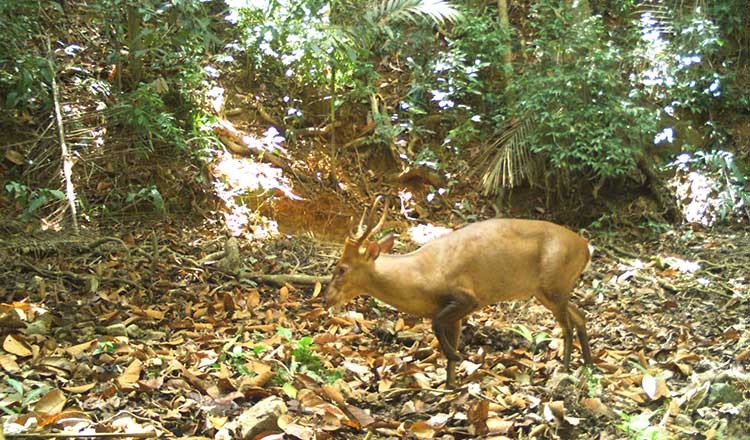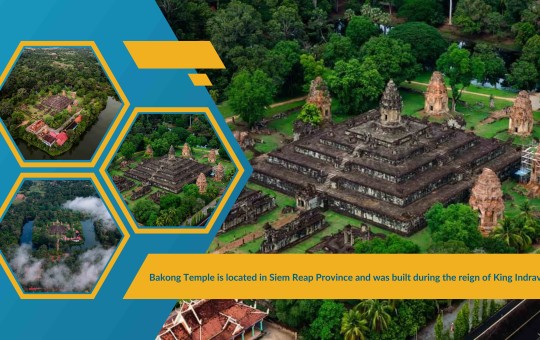
Giant Muntjac spotted again after 30 years
The endangered Giant Muntjac has been photographed by camera traps for the first time in Cambodia after 30 years, generating hope again for wildlife conservationists.
According to Environment Ministry spokesman Neth Pheaktra the Giant Muntjac, the largest of the species, was last seen in Cambodia in 1994.
Pheaktra said a camera trap installed by the Environment Ministry in Ratanakiri province’s Virachey National Park recently captured pictures of the muntjac, proving that the large mammal is not extinct in the Kingdom.
“The Giant Muntjac tends to live in a jungle with tall trees,” he said. “Until recently, we have not seen it again until was came across some people selling its parts in a remote area in Mondulkiri province.”
He added that the Giant Muntjac is listed as Critically Endangered by International Union for Conservation of Nature (IUCN), and in Cambodia, their population dramatically declines due to poaching for their meat and horn.
“I called on people to say no to bush meat and stop poaching and snaring,” Pheaktra said.
Seng Teak, Country Director of WWF-Cambodia, lauded Cambodia over such great news.
“WWF is working closely with the Ministry of Environment to find and trace rare species,” he said. “We are now working on a project to track wild animals by placing radio receivers on their necks to study their movement so that we can better protect them.”
Cambodia has recently discovered several species of rare animals in the protected areas.
Earlier this month, conservationists found the hairy-nosed otters (Lutra sumatrana) in Battambang, Kampong Thom, Mondulkiri and the coastal area of Koh Kong provinces.
The species is listed as an endangered one on the IUCN list.
Another promising development is the sighting of the endangered Germain’s langurs species of monkeys.
The Ministry of Environment reported that there are now more than 3,000 Germain’s langurs in Cambodia’s protected areas and its numbers have delighted conservationists.
Globally, the number of primates is declining by about 50%. Germain’s langurs are found in dense forests, semi-dense forests and coastal mangroves, as well as flooded forests, and can be identified by their dark grey fur.




